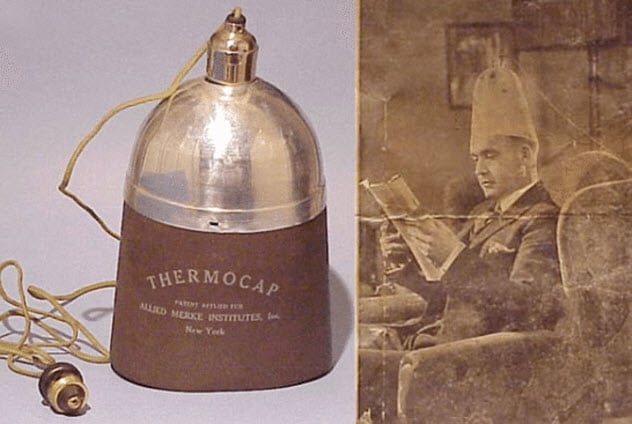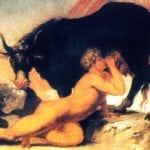 Miscellaneous
Miscellaneous  Miscellaneous
Miscellaneous  History
History 10 Huge Historical Events That Happened on Christmas Eve
 Music
Music 10 Surprising Origin Stories of Your Favorite Holiday Songs
 History
History 10 Less Than Jolly Events That Occurred on December 25
 Weird Stuff
Weird Stuff 10 Funny Ways That Researchers Overthink Christmas
 Politics
Politics 10 Political Scandals That Sent Crowds Into the Streets
 Weird Stuff
Weird Stuff Ten Bizarre Facts About The Doge Meme
 Our World
Our World 10 Ways Your Christmas Tree Is More Lit Than You Think
 Movies and TV
Movies and TV The 10 Coolest Stars to Set Sail on The Love Boat
 History
History 10 Things You Didn’t Know About the American National Anthem
 Miscellaneous
Miscellaneous Top 10 Things Crypto Was Supposed to Change & What Actually Did
 History
History 10 Huge Historical Events That Happened on Christmas Eve
 Music
Music 10 Surprising Origin Stories of Your Favorite Holiday Songs
Who's Behind Listverse?

Jamie Frater
Head Editor
Jamie founded Listverse due to an insatiable desire to share fascinating, obscure, and bizarre facts. He has been a guest speaker on numerous national radio and television stations and is a five time published author.
More About Us History
History 10 Less Than Jolly Events That Occurred on December 25
 Weird Stuff
Weird Stuff 10 Funny Ways That Researchers Overthink Christmas
 Politics
Politics 10 Political Scandals That Sent Crowds Into the Streets
 Weird Stuff
Weird Stuff Ten Bizarre Facts About The Doge Meme
 Our World
Our World 10 Ways Your Christmas Tree Is More Lit Than You Think
 Movies and TV
Movies and TV The 10 Coolest Stars to Set Sail on The Love Boat
 History
History 10 Things You Didn’t Know About the American National Anthem
10 Bizarre Cures For Baldness From Around The World
Since the dawn of time, a problem has haunted a section of mankind. They just can’t stop their hair from falling out. With the hair loss industry estimated to be worth almost $3 billion, it is little wonder that many people have invented weird and wonderful treatments for this perpetual problem.
From the ancient Egyptians to modern man, many have tried and failed to stem the ravages of time and keep the hair on their heads. Maybe these bizarre cures didn’t work, but you have to admit they were creative.
10 Animal Fats

Man’s seemingly futile quest to retain a full head of hair isn’t a new phenomenon. Recorded evidence of baldness treatments extends all the way back to ancient Egypt. For Egyptians, appearance indicated a person’s status, role in society, or level of political influence. It’s no wonder that men who lost their hair would try anything to get it back.
The Edwin Smith Papyrus, the oldest-known surgical treatise on trauma, contains an ancient hair loss remedy. The papyrus recommends treating baldness by applying a balm consisting of the mixed fats of lion, hippo, crocodile, cat, serpent, and ibex. Although this may sound completely unpalatable to people today, it illustrates clearly how much Egyptians valued their hair.[1]
9 Xervac

Balding men in 1930s America needed to look no further then the Crosley Corporation’s Xervac. Inventor Dr. Andre Cueto had spent several years researching the problem of baldness and came to the conclusion that hair fell out due to a reduction in blood flow to the scalp.[2]
A user of the Xervac device would place a bicycle-style helmet on his head. This was attached by a hose to a large device on the floor. The Xervac then alternated cycles of suction and pressure to increase blood flow to the scalp. Supposedly, this process would lead to the growth of new hair.
As this device is no longer in use, we can conclude that it must have been just a load of hot air!
8 Pigeon Droppings

Hippocrates is often considered to be the father of modern medicine. His name is associated with the Hippocratic Oath, which urges physicians to “do no harm.” While his legacy lives on, his cure for baldness does not.
Plagued by baldness himself, Hippocrates recommended a treatment consisting of pigeon droppings, opium, beetroot, horseradish, and spices to cure hair loss. Although this had to smell funky, it would have done little to help the “follicly challenged” patients under his care.
Hippocrates is still remembered in the pursuit of a full head of hair. In a man with male pattern baldness, the rim of permanent hair around the back and sides of the head, which is used for hair transplants, is known as the “Hippocratic wreath.”[3]
7 A Laurel Wreath

One of the most influential figures in world history, Julius Caesar (whose name ironically translates as “abundant hair”) was embarrassed by his baldness. Roman biographer Suetonius reported that Caesar’s baldness was “a disfigurement which troubled him greatly since he found that it was often the subject of the gibes of his detractors.”[4]
A hairless head was regarded as ugly in Roman times. The poet Ovid wrote: “Ugly are hornless bulls, a field without grass is an eyesore, so is a tree without leaves, so is a head without hair.”
Caesar’s lover, Cleopatra, devised a remedy of ground mice and horse teeth. When that failed to work, Caesar began wearing a laurel wreath to hide his baldness. The wreath had been awarded to him for his many battlefield victories. Caesar’s technique was used in later years by great performer Elton John, who used elaborate and unusual hats to cover his baldness onstage.
6 Bull Semen

This cure is a load of BS—bull semen, that is.
Used in salons across the US and UK, bull semen is touted as a potential treatment for hair loss. According to this theory, bull semen is incredibly rich in protein (yuck) which will help to feed and stimulate hair growth.[5] We can only speculate as to who first tried this or why, but it’s probably best to “moove” on to the next cure before we throw up!
5 Thermocap

The Thermocap, another wacky invention to help balding men, was marketed by New York’s Allied Merke Institute in the 1920s. Based on a series of experiments by French scientists, the institute claimed that hair follicles did not die but instead lay dormant, waiting to be restimulated.
The bald and somewhat gullible user would wear the cap for 15 minutes a day to allow the device’s blue light to stimulate new hair growth.[6]
4 Headstands

In yoga, the headstand is known as the king of all poses due to the wide number of benefits. One is the supposed prevention of hair loss. The theory behind this is similar to that of the Xervac. By inverting the body, yogis believe that there will be an increase in blood flow to the scalp, which prevents hair loss.[7]
For those unable (or unwilling) to do a headstand, many companies now offer inversion tables. These devices allow you to suspend yourself upside down for extended periods of time. If your world has been turned upside down by baldness, this might be the cure to make things right.
3 Hot Sauce

Although it’s too eye-watering for most, this remedy does at least have a toehold in scientific fact. In a 2003 paper published in the Korean Journal of Dermatology, scientists describe how capsaicin (the active ingredient in chili peppers) helped to regrow hair at a faster rate on mice.
Unfortunately, there is no evidence to suggest that this works on humans.[8] If you are tempted to give it a go, please be careful that the hot sauce doesn’t get in your eyes!
2 Cow Urine

In traditional Indian medicine, cow urine is still used today to treat a wide range of conditions.
Known as gomutra, cow urine is purported to be effective in the treatment of hair loss. For maximum effect, the urine should be from a virgin cow and is supposed to be collected and drunk before sunrise. (Other doctors recommend against drinking urine as it can cause illness, rash, or both in humans.)[9]
Don’t have access to a nearby cow? Fear not. In 2009, an Indian company released a soft drink containing 5 percent cow urine.
1 Castration

Our dear friend Hippocrates first reported this final cure for baldness—castration. His theory began when he noticed that eunuchs (castrated men) never lost their hair.[10]
Unwilling to test this idea himself, Hippocrates stuck to pigeon droppings. However, a 1960 paper backed up Hippocrates’s theory when it found no development of male pattern baldness in people who had undergone castration. A hair “cut” too far, some might think!
Read more weird facts about human hair on 10 Incredible Facts About Human Hair and 10 Weird Ways Human Hair Has Been Used.








